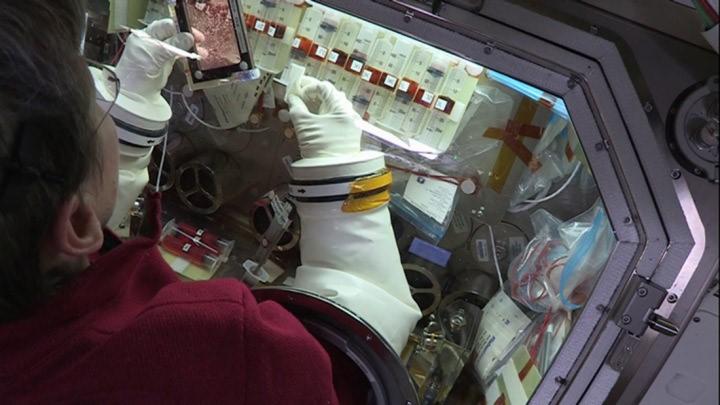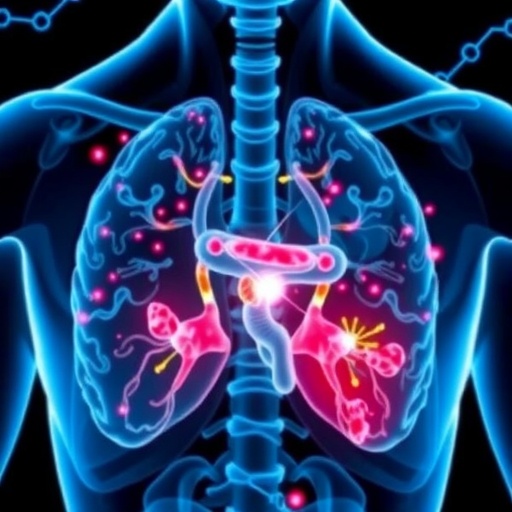Spaceflight changes much about the human body, including how the heart functions and how cells that create heart tissue behave. Scientists studying these changes on the International Space Station continue to report important discoveries

Credit: NASA
Spaceflight changes much about the human body, including how the heart functions and how cells that create heart tissue behave. Scientists studying these changes on the International Space Station continue to report important discoveries.
For the Cardiac Stem Cells investigation, researchers cultured human heart stem cells, or cardiovascular progenitor cells (CPCs), aboard the space station. These immature heart cells can develop into several different types of cardiovascular cells and produce greater numbers of them.
The investigation showed that spaceflight affects communication within and between cells, cell development and core stem cell properties, as reported in two papers published in 2018, one in the journal npj Microgravity and another in Stem Cells and Development.
The researchers recently presented new studies in a related paper that compared the Hippo signaling pathway in CPCs cultured on the space station with the same cells cultured in a clinostat, which simulates microgravity conditions on Earth. The Hippo signaling pathway, necessary for cardiac development, is normally active in adults and inactivates Yes-associated protein, or YAP1. YAP1 regulates cell survival and increases in the number of cells, so inactivating it reduces cell proliferation. When the Hippo pathway is inhibited or inactive, though, YAP1 becomes active, resulting in more progenitor cells and possible organ growth. This paper reports that the adult cells in space and in the clinostat both showed an increase in the expression of YAP1.
Prior work in rodents has shown that introducing YAP1 into adult hearts can reactivate regenerative ability. This most recent finding shows that microgravity can induce adult human CPCs to express YAP1, which could have interesting implications.
“The focus of this paper was on YAP1 specifically because it is one of the key players in cardiovascular repair,” says Mary Kearns-Jonker, a researcher in the Department of Pathology and Human Anatomy at Loma Linda University School of Medicine in California and one of the paper’s authors. “YAP1 stimulates cardiovascular regeneration when it is upregulated, or expressed at a higher level. Now we know it is upregulated on a short-term basis by microgravity.” She noted that the change in YAP1 expression is temporary. The impermanence of the effect is a good thing, she adds, otherwise cells could proliferate in an uncontrolled way and lead to cancers.
“YAP1 has a history of playing a role in organ development and size,” explains lead author Victor Camberos, also in the Department of Pathology and Human Anatomy at Loma Linda. “YAP1 levels are higher in neonatal cardiovascular progenitor cells, which are known to be very effective for cell-based repair. Once the neonatal period is over, YAP1 expression and the efficacy of the cells for cardiovascular repair are reduced. Since YAP1 is an important regulator of growth and repair, temporarily increasing its expression in cells from older adults could be useful therapeutically.”
“Inducing YAP1 by exposing cells to microgravity gives us the capacity to alter cells in a way that may benefit organ repair,” Kearns-Jonker points out. The researchers in effect raised the expression of YAP1 in cells that do not regularly express it and showed that this outcome is not permanent.
The team’s finding that simulated microgravity has the same effect as actual microgravity also is important. Researchers can easily access samples in a clinostat versus samples orbiting roughly 250 miles above Earth. “The clinostat sufficiently emulates microgravity that we see on the space station,” says Camberos. “That is significant, because not a lot of labs have the opportunity to do research in space.”
Fortunately, some do, and that opportunity is leading to promising advances toward healthier hearts in space and on Earth.
One of several studies relating to cardiovascular health sponsored by the ISS National Lab, the Cardiac Stem Cells investigation received a 2018 International Space Station Compelling Results Award in Biology and Medicine at the ISS Research and Development Conference.
###
Media Contact
Courtney Beasley
[email protected]
Original Source
http://www.




